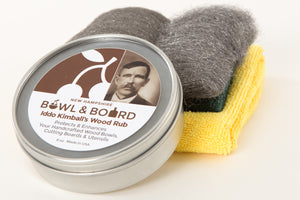- Continue Shopping
- Your Cart is Empty
The Do’s and Don’ts of Wooden Kitchenware

Whether it’s day-to-day wooden utensils like wooden spoons and spatulas and wooden salad servers or things like wooden salad and serving bowls or wooden cutting boards and chopping blocks , there is a right way and a wrong way to take care of these kitchen essentials. Be sure to follow these do’s and don’ts to make sure yours will be safe, strong and beautiful for years to come.
Do your research
Before you buy any wooden kitchen item, make sure you’re getting the kind of wood you want and the right size for your kitchen table or counter. If you don’t know the right kind of wood, we usually recommend maple, cherry and walnut as these woods are well known for their lasting durability and beauty. It’s also important to make sure the wood is food-safe if you’ll be using it with food.
Don’t be cheap
Everyone likes to save a buck, but while buying a mass-produced spoon, bowl or board from a mega store might save you a few pennies now you’ll most definitely end up paying for it later. Not only is the shoddy quality of the construction and wood a major factor in why some bowls, boards and wooden kitchen utensils wear down so easily, many of these pieces have been put together using non-food safe glues and other materials. Think about your family eating food in an unsafe bowl or food that’s been prepared with a non-food safe spoon or cutting board. By spending just a bit more on a handcrafted wooden bowl, handmade wooden spoon or wooden cutting board, you’ll be saving money in the long run and keeping your family safe. And because pieces made with good, strong wood and high quality craftsmanship, last longer and look better, it will be a beautiful addition to your kitchen and home for years to come.
Do season wood properly
Before you use any wooden kitchen item it’s important to preserve (or season) the wood properly. This will add a protective layer around the wood to ensure the item remains strong and safe to use. This should be done several times a year but most definitely before you first use it, if possible. Seasoning wood is not an expensive or time-consuming practice but you want to make sure you use safe and natural wood seasoning oils and conditioners. Which leads us to our next big “don’t”.
Don’t season your wood with food oils
Using oils like Canola, olive or other food-based oils will not give your wood the same level of protection as natural mineral oils. But even more reason never to use them is that food oils can go rancid and will affect your food, making your wooden spoon, bowl or board unsafe for use. Eventually you won’t even be able to use the piece anymore, making it useless.
Do wash and dry thoroughly
After using your wooden utensil, wooden bowl or cutting board, se sure to remove all food particles and give it a good clean washing using warm water and mild soaps. After rinsing, thoroughly dry all excess water so the wood fibers don’t absorb the moisture and weaken.
Don’t put wood in the dishwasher
A sure way to lessen the life and appearance of a good wooden bowl, board or spoon is to put it in the dishwasher. Harsh detergents and high heat alone are not good for the wood’s surface but the big culprit is the large amount of water the wood will soak in for long periods. This and the high heat can lead to warping, cracking and splintering.
Do store in a dry shaded area
Direct sunlight and excessive heat can dry out wood so it’s recommended to keep yours out of the sun and away from heat. It’s also a good idea to keep it away from the sink and other areas that tend to get wet a lot. Keeping your wooden item dry and cool will help keep it strong and attractive.
Don’t forget to re-season or refinish
In order to keep a strong protective layer on your wooden spoons, wooden cutting boards/chopping blocks and wooden salad bowls you need to re-season your piece once in a while. Some do it religiously, some every few months. Regardless of how often you do it, it needs to be done to keep that nice protective layer on the wood. If the wood becomes a bit fuzzy or worn down you can always use gentle sandpaper to remove the weak fibers and expose a fresh layer of wood. When you do that, be sure to re-season the wood since the original preserving layer will have been removed.

Wood Rejuvenating Kit - Wood Care for Neglected Bowls and Boards
from $ 34.99





